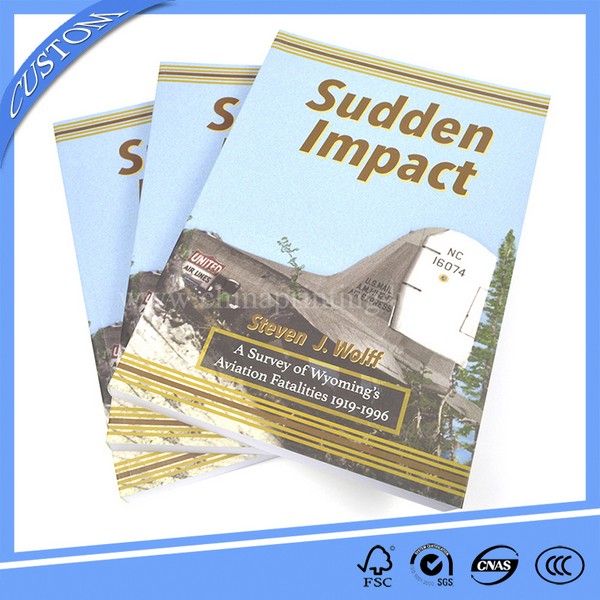In the post-press processing of digital
printing, since digital printing has different characteristics from traditional book printing, there are many places
to pay attention to.
 Experience 1: It is not advisable to cover
the film immediately after printing
Experience 1: It is not advisable to cover
the film immediately after printing
Process Description: The film is a printed
matter that covers the surface of the printed matter to form a paper-plastic
composite. The surface of the printed matter is covered with a transparent
plastic film, which can enhance the brightness of the printing surface, wear
resistance, waterproofness, heat resistance, antifouling and the like.
Problem Description: After the film is
printed on the digital book printing,
the printing will appear foaming. This is because the ink layer usually
contains digital oil, and the adhesive cannot penetrate the ink layer normally.
Solution: Adjust some of the processes in
the digital printing production process, and try to let the printed products be
placed for a period of time after printing.
Experience 2: Die cutting, indentation
emphasizes precision
Process introduction: The method of cutting
a certain type of paper or paperboard according to a certain specification and
cutting into a certain shape by a knife is die-cutting; using a steel wire
according to a certain specification, pressing an impression on paper or
paperboard, so as to use the printing mark to take paper or cardboard is bent,
this method is called indentation.
Problem Description: At present, with the
demand for personalized products, small batches, and variable packaging
products, some packaging products are also printed by digital printing. The
bending and bonding parts of the packaged products need to be realized by die
cutting and indentation. Die-cutting, indentation common specifications are not
right, the product is skewed or overlapped, etc. Most of the problems are not
related to the size uncertainty.
Solution: The typesetting size should be
calculated strictly according to the customer's processing requirements, and
the actual sample should be measured and audited to avoid the use of errors and
cause large losses.
Experience 3: Hot melt adhesive temperature
should be mastered
Process Description: Binding is a process
in which a printed paper, including illustrations, covers, etc., is folded into
a signature according to different specifications, and is subjected to a series
of processing procedures such as flattening, gluing, cutting, and finally into
a book. The process is simple, the technology is mature, the cost is low, and
the binding efficiency is high.
Problem Description: The quality of the
binding quality is directly related to the quality and appearance of the book.
The temperature is too high, the rubber is easy to age, and it does not work.
If the temperature is too low, there is a phenomenon of stickiness and paper
jam.
Solution: When using hot melt adhesive
binding, the hot melt adhesive should be heated to a certain temperature before
production, generally controlled between 150 ~ 200 ° C, the optimum temperature
is 170 ~ 180 ° C and the temperature should be stable.
 Email:[email protected]
Email:[email protected] Tel/WhatsApp:+86 13580851182
Tel/WhatsApp:+86 13580851182














